Taping technique for Patellar tendenopathy
Table of Contents
Introduction:
Kinesio taping for patellar tendinitis is an important technique to relieve pain and further support to patella, it also prevents further injury. This is most effective and supportive treatment to give static as well as dynamic support to the patella.
kinesio taping gives dynamic stability to the joint while typical taping give static stability to patella. it is also called kinesiology tape or kinesiology therapeutic tape. is an elastic cotton strip with an acrylic adhesive that is purported to ease pain and disability from athletic injuries and a variety of other physical disorders.
Taping help stabilize it when you are active and can give relief from pain. mostly used in sports injuries because ankle joints are more prone during sports. Kinesiology taping is an excellent way to capitalize on your hands-on efforts when working to reduce tone in muscular tissues.
Kinesiological tapping could be a rehabilitative cum protecting use of elastic kinesiological tapes to supply :
- reduction in patellar pain
- enhancing performance of knee joint
- preventing any injuries to the knees
- support to the patella bone
- repositioning of structure
- facial and ligamentous correction.
- Patellar tendinopathy is a source of anterior knee pain, characterized by pain localized to the inferior pole of the patella.
- Pain is aggravated by loading and increased with the demand on the knee extensor musculature, notably in activities that store and release energy in the patellar tendon.
- Patellar tendinopathy is primarily a condition of relatively young (15-30 years old) athletes, especially men, who participate in sports such as basketball, volleyball, athletic jump events, tennis, and football, which require repetitive loading of the patellar tendon.
- The prevalence of this condition in elite volleyball and basketball players has been found to be over 40 percent.
- While certain intrinsic risk factors for patellar tendinopathy have been identified, such as gender, weight and body mass index, the most significant risk factor appears to be training load (i.e. an extrinsic risk factor).
Relevant anatomy:
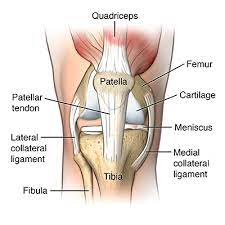
- The quadriceps muscles are connected to the inferior pole of the patella by the common quadriceps tendon through a sesmoid bone, the patella.
- The patellar ligament then connects the bottom of the patella to the tibial tuberosity.
- The force generated from the quadriceps muscles acts through the patellar as a pulley, causing the knee to extend.
- A healthy tendon is composed mostly of parallel collagen fibers closely packed together (86%). Collagen is predominantly type I.
- Other components of the tendon matrix are elastin (2%), proteoglycans (1–5%), and inorganic components (0.2%).
- The collagen in tendons are held together with proteoglycan components Decorin and Aggrecan, which bind to the collagen fibrils at specific locations.
- Tenocytes are a tendon specific fibroblast type cells that produce the collagen molecules, which cluster together to form collagen fibrils.
- Fibril bundles are organized to form fibres with the elongated tenocytes closely packed between them.
- The cells communicate with each other through gap junctions, and this signalling gives them the ability to detect and respond to mechanical load.
Causes of patellar tendenopathy:
Patellar tendonitis comes from repetitive stress on the knee, most often from overuse in sports or exercise. The repetitive stress on the knee creates tiny tears in the tendon that, over time, inflame and weaken the tendon.
Contributing factors can be:
- tight leg muscles
- uneven leg muscle strength
- misaligned feet, ankles, and legs
- obesity
- shoes without enough padding
- hard playing surfaces
- chronic diseases that weaken the tendon
Symptoms of tendenopathy:
- The most common symptom of jumper’s knee is pain just below the kneecap.
- At first, you may only feel the pain in the early part of your workout or activity.
- Later, the pain may get worse or last longer.
- Eventually, pain may prevent you from using your knee as you normally would.
- Stiffness in the knee.
- Swelling just below the knee.
Risk factors of Patellar tendenopathy:
- Physical activity : Running and jumping are most commonly associated with patellar tendinitis. Sudden increases in how hard or how often you engage in the activity also add stress to the tendon, as can changing your running shoes.
- Tight leg muscles : Tight thigh muscles (quadriceps) and hamstrings, which run up the back of your thighs, can increase strain on your patellar tendon.
- Muscular imbalance : If some muscles in your legs are much stronger than others, the stronger muscles could pull harder on your patellar tendon. This uneven pull could cause tendinitis.
- Chronic illness : Some illnesses disrupt blood flow to the knee, which weakens the tendon. Examples include kidney failure, autoimmune diseases such as lupus or rheumatoid arthritis and metabolic diseases such as diabetes.
Grades of Patellar tendenopathy:
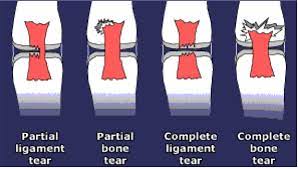
- Stage 1 – Pain only after activity, without functional impairment.
- Stage 2 – Pain during and after activity, although the person is still able to perform satisfactorily in his or her sport.
- Stage 3 – Prolonged pain during and after activity, with increasing difficulty in performing at a satisfactory level.
- Stage 4 – Complete tendon tear requiring surgical repair.
Taping technique for Patellar tendenopathy:
Measure the tape from your heel to the ball of your foot and cut that length. cut into four tails leaving the last two inches uncut as a anchor.(you can use a solid strip if you have problem with the tails loosening.)
flex your foot pointing your toes up,and the anchor the two inches base to your heel. apply the tails towards your toes with no stretch.measure another piece of tape around your foot.
Anchor this strip at the outside top edge of your foot.tape from outside to inside to support the arch, pulling up a little with tape at the end. Lay down the end with no tension on the top of your foot.
1.Kinesio taping for Patellar tendenopathy:
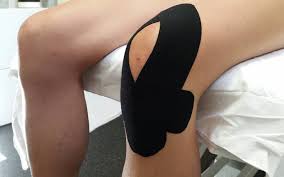
- Sit with the knee bend at 90 degree and maintain this position during the taping procedure.
- Cut a strip of k-tape about 5 inches long.
- Using the 3 inches k-tape,apply 75% tension on either side side of the tape.Apply the center of the tape directly on to the patellar tendon.
- Release the tension on the tape as you lay down either end of the along the side of the knee.
- Locate the center point mid length down the front of the thigh next locate the tibial tuberosity which will be a prominent bump below the knee cap.
- the next 2 strips of K-tape will start at the center point mid length down the thigh and end at the tibial tuberosity.
- Apply one of the 5 inch strips tho this center point of the thigh . apply 25% tension on the K tape and lay the first half of the tape along the lateral lower half of the thigh.
- as you approach the knee apply 50 percent tension along the second half of the tape wrapping it around the knee cap.
- apply no tension as you lay down the end of the tape at the tibial tuberosity.
- Repeat this same technique for the medial side of the thigh and knee .
- Using the backing paper of the tape rub the K-tape and heat activate the glue on the tape.
2.Rigid taping for Patellar tendenopathy:
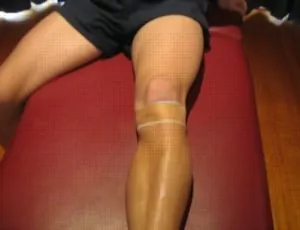
- Keeping the knee in a slight bend (approximately 30 degrees), tape around the knee just below the knee cap, at the level of the patella tendon.
- Apply the tape firmly to the front of the knee for support and gently at the back of the knee to prevent circulatory problems.
- 1 – 3 pieces of tape may be used depending on the level of support required.
- Occasionally this taping technique may be made more effective by rolling up a small section of tape into a small cylinder and placing it horizontally across the patella tendon and underneath the tape.
- The size and shape of this cylinder may need to be tailored to the individual to ensure maximal comfort and minimal pain.
How to remove Tape?
- So presently you’ve got your tape on and you’ve gotten that additional support throughout your chosen sporting activity, it’s time to need it off, so enable the United States to ease the tactic of removing physiology tape for you.
- the foremost effective tip we are going to provide once it involves removing your physiology tape is to peel the skin from the tape, not the tape from the skin.
- But in terms of the actual methodology, 1st ensure you’re removing the tape in an equivalent direction as a result of the expansion of the hair below it, and despite what you’re doing don’t rip the tape off kind of a plaster!
- Start slowly, folding the corners of the sting back bit by bit, guaranteeing that you’re birth the removed tape on the rear of the applied tape, as opposition propulsion the tape on top of and aloof from your arm.
- As you’re scraping the tape, hold your skin down beside your completely different hand and either regulator it or pull it gently among the opposite means of the tape. This helps the skin and so the tape to separate heaps expeditiously but with no discomfort.
- If the tape has been applied over a furred region of the body, it helps to maneuver on the tape as you are peeling it off, as a result of the pressure helps avoid a lot of pain.
- It’s knowing have shaved the realm before applying the tape but, as this isn’t frequently smart, taking this precaution square measure reaching to be necessary to some.
- want a bit additional assistance? Apply oil directly onto the tape, rub it in and wait around 10 to twenty minutes before removing it slowly. This will facilitate reducing the viscousness of the tape and build it easier to induce obviate.
When should I avoid Patella Tendon Taping?
Patella tendon taping should be avoided in the following instances:
- If you have certain injuries such as some fractures (this should be discussed with the treating physiotherapist).
- If you have a skin allergy to sports tape.
- If the taping technique results in an increase in symptoms such as pain, ache, itchiness, discolouration, pins and needles, numbness, swelling or excessive redness of the knee, foot or ankle.
- If you have sensory or circulatory problems.

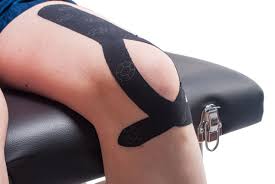
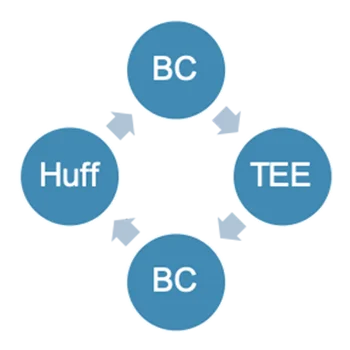
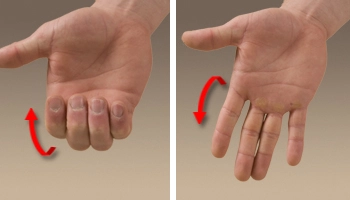



One Comment